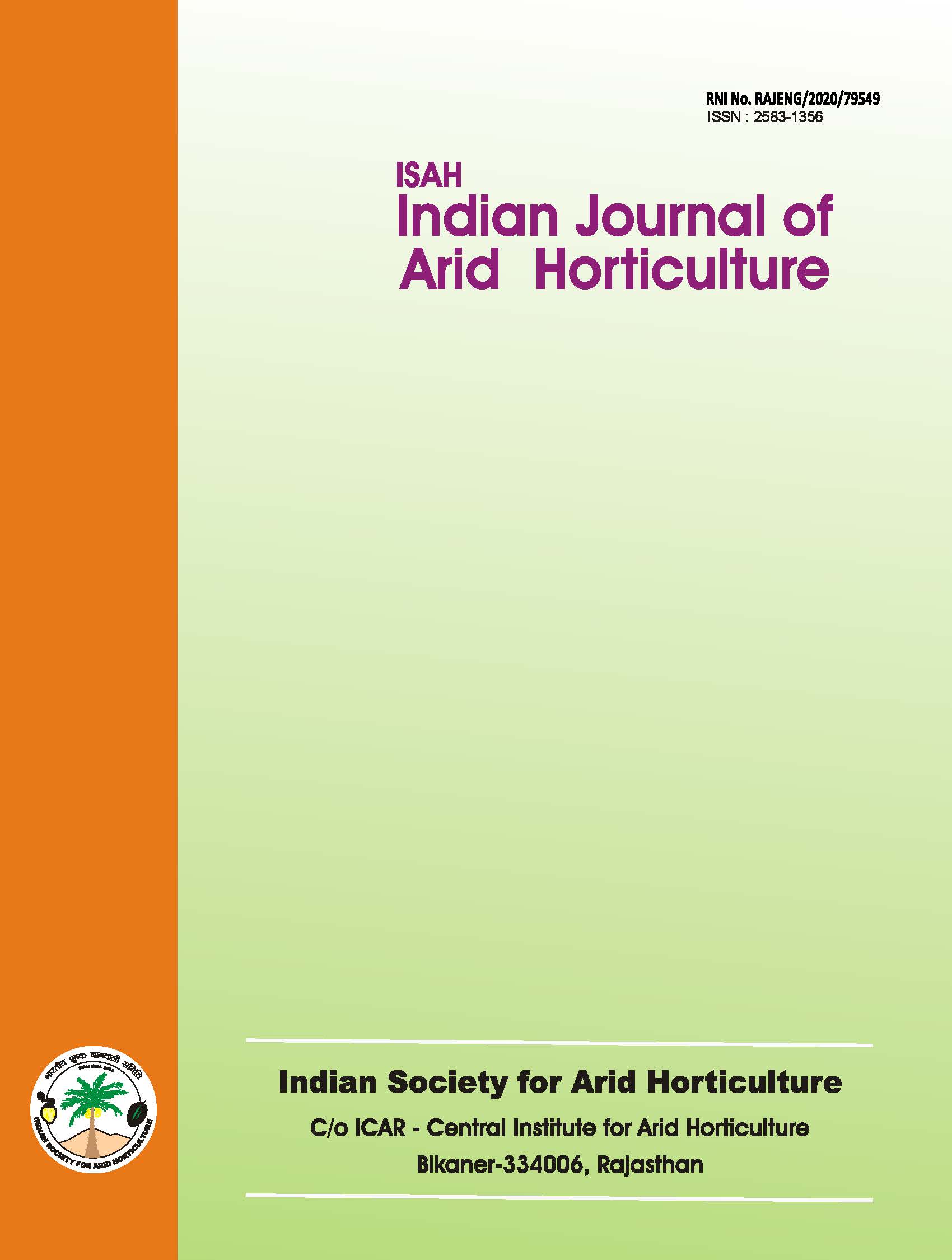Screening of Custard apple (Annona squamosa L.) genotypes for Fruit rot resistance
DOI:
https://doi.org/10.48165/ijah.2022.4.1.03Keywords:
Custard apple, fruit rot, Colletotrichum gloeosporioides, AFC, MBIM, MDITAbstract
Custard apple (Annona squamosa L.) is a resilient dry land horticulture crop with significant export potential and good economic rewards. Fruit rot, caused by Colletotrichum gloeosporioides Penz, is one of the major custard apple disease that can cause significant losses. The custard apple genotypes were screened by different methods at All India Co-Ordinated Research Project on Arid Zone Fruits (Fig and Custard apple), Jadhavwadi to find out source of resistance. It was observed that all 30 genotypes were found infected by disease. The studies carried out by Attached Fruit Culture (AFC) revealed that more number of genotypes had shown highly susceptible reaction those inoculated by Mycelial Bit Inoculation Method (MBIM) than those inoculated by Micro Droplet Inoculation Technique (MDIT). In by MBIM method, Vrudheshwar-3, Verul-2, Karkhel, Vrudheshwar-4, Vrudheshwar-2, Telgaon Local, Humnabad Local and Dhanagarawadi-3 genotypes showed moderately resistant reaction to disease whereas in MDIT method, Vrudheshwar-3, Verul-2 and Karkhel showed resistant reaction. The custard apple genotypes were screened natural field condition also, out of 30 genotypes, Vrudheshwar-3, Verul-2, Karkhel, Humnabad Local, Dhanagarwadi-3 and Vrudheshwar-4 recorded resistant reaction to fruit rot disease.
Downloads
References
Anonymous. 2020. ICAR-AICRP on Arid Zone Fruits: Annual Report 2020. pp. 235.
Anonymous. 2022. ICAR-AICRP on Arid Zone Fruits: Annual Report 2021. pp. 246.
DLNZDG. 2020. Studies on fruit rot of custard apple caused by Colletotrichum gloeosporioides Penz. Ph.D. Thesis, MPKV Rahuri, Maharashtra, India.
Hayes, W.B. 2002. Fruit Growing in India. 3rd Edition. Kitabistan, New Delhi.
Mukerji, K.G., and Bhasin, J. 1961. Plant Diseases of India: A Source Book. Tatta McGraw-Hill Publishing Company Ltd., New Delhi. pp. 245-290.
Munaut, F., Hamaide, N., and Maraite, H. 1995. A standardized microdroplet inoculation technique for analysis of the interaction between Colletotrichum gloeosporioides and Stylosanthes guianensis. Parasitica, 51: 195-201.
Padule, D.N., and Kaulgud, S.N. 2001. Disease response of custard apple varieties to fruit rot caused by Colletotrichum gloeosporioides. Proceedings of the 9th Zonal Meeting, Western Zone, ICAR, New Delhi. Akola. pp. 3-9.
Rocha-de-Souza, R., Oliveira, N.T., and Menezes, M. de. 1998. Comparison of inoculation methods' efficiency for evaluation of Colletotrichum gloeosporioides isolates' pathogenicity on passion fruits (Passiflora edulis). Brazilian Archives of Biology and Technology, 41(1): 145-153.
Venkataratnam, L., and Satyanarayana Swamy, G. 1960. Studies on genetic variability in Annona squamosa. Indian Journal of Horticulture, 15: 228.
Venkataratnam, L. 1965. Sitaphal and other Annonaceous Fruits in India. Farm Bulletin (54).

